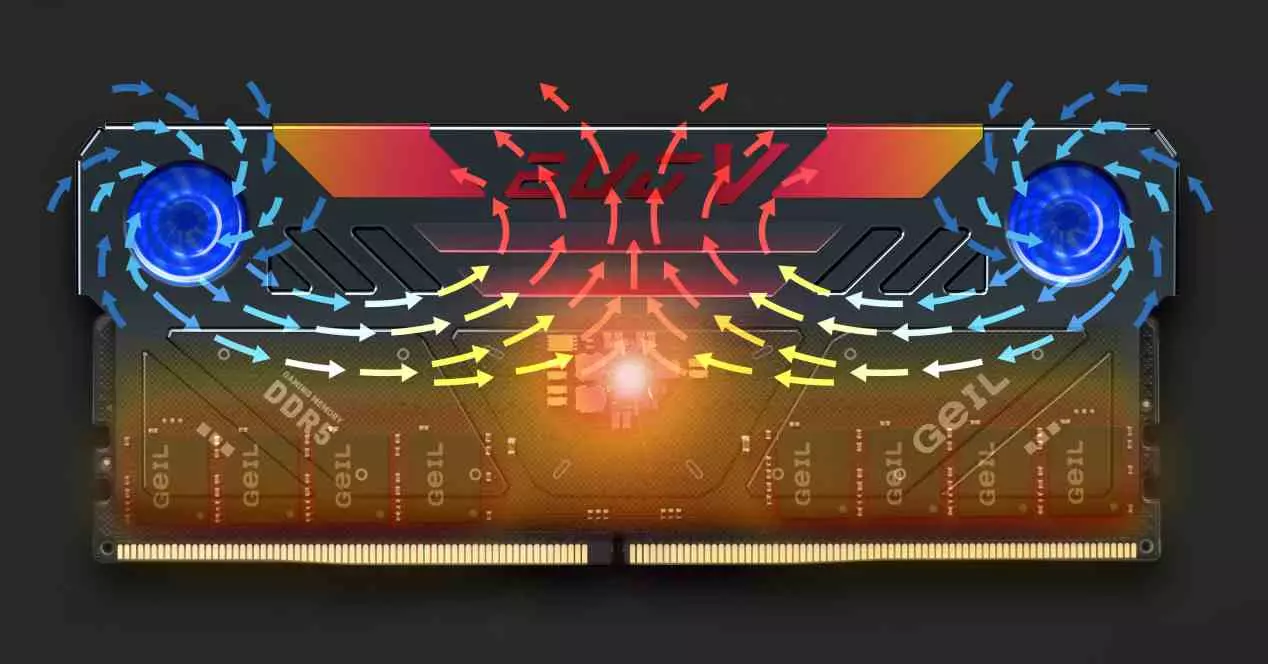
It is not very normal to see active cooling in RAM, since they usually use the passive type. That is, a heat sink made of copper and another material. However, the fact that the PMIC, in charge of energy management, is inside the DIMM module itself has made possible the curious DIMM module that we are going to talk about. We mean GeIL EVO V DDR5 RGB that stands out for the use of a double fan. How is that possible?
From time to time, component manufacturers surprise us with ideas that are at least curious. In the case of the Taiwanese manufacturer GeIL and its EVO V DDR5 RGB, what stands out is the iImplementation of two small fans below the common heatsink. Its task is quite obvious, to add cold air from outside to help keep DDR5 memory chips at stable temperatures. Both fans are very small and come with an RGB light bar. All this without the module increasing in size compared to standard designs and can therefore be used with all motherboards and cooling systems on the market. Are we facing a rarity or the first type of RAM of this type?
GeIL EVO V DDR5 RGB, specifications
We are facing a DDR5 RAM memory module that comes in two different capacities: 16 and 32 GB. Which will be sold in a double kit under two different colors, as can be seen in the image gallery below these lines.


As for its technical specifications, these are the following:
- Their CAS latency stands between the 34 and 40depending on the clock speed reached during the overclock, the latency will progressively increase between these two values.
- works at 4800MHz of standard transfer speed, but can reach the 6600MHz. However, it can reach other intermediate speeds such as: 5200MHz, 5600MHz, 6000MHz, 6200MHz, 6400MHz Y 6200MHz.
- support for Intel XMP 3.0 Profiles.
- Its voltage fluctuates between 1.1 V and 1.25 V depending on its clock speed.
Well, as we mentioned in the introduction, DDR5 modules GeIL EVO V DDR5 RGB make use of two micro fansyes These are located by under aluminum heatsink Y They manage to reduce the temperature by 45%. They have achieved this thanks to the fact that the integrated circuit in charge of managing the energy is inside the module. What has allowed them to integrate an active cooling system in it without external participation of other components.
At the moment, RAM memories do not reach the consumption levels that require the use of fan-based cooling systems. Outside of its almost unknown manufacturer, we have to see if the big brands that produce RAM adopt this solution. At the moment, at the speeds that DDR5 currently achieves it doesn’t seem like it’s necessary. At what point might the change occur in general? We honestly don’t know.


